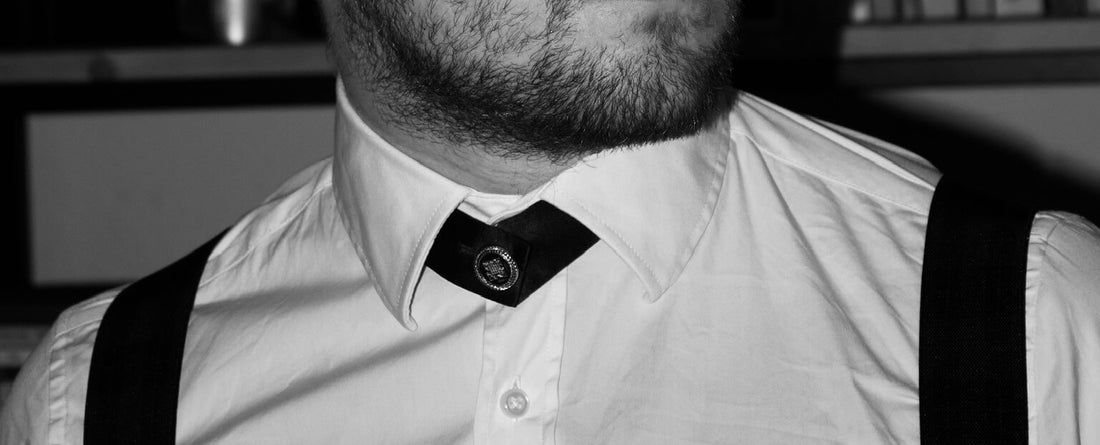The Birth of Neckwear: Cravats to Bow Ties and Long Ties
In the annals of fashion history, the 17th century heralded the emergence of the cravat, a piece of cloth worn around the neck by Croatian mercenaries during the Thirty Years' War. The French, ever the pioneers of style, were captivated by this accessory and soon adopted it. They named it the "cravat“ to pay tribute to it’s origins. As time progressed, this simple piece of cloth evolved, giving birth to mainly two distinct styles: the bow tie and the long tie. The bow tie, in particular, became a favorite of figures like Winston Churchill, who often sported it during significant events, making it synonymous with leadership and elegance.
The Golden Era of Ties: 19th to 20th Century
As the world transitioned into the 19th and 20th centuries, ties became an integral part of a gentleman's attire. The industrial revolution, with its enhanced production capacities, played an important role in popularizing ties among the masses. They were no longer just an accessory but a reflection of one's status, profession, and taste. The bow tie or black tie outfit became synonymous with elegance, while the width of a long tie could tell you a lot about social positions. As society evolved, ties transitioned from symbols of elegance to essential workwear, especially in office settings. However, in today's world, ties have been unfortunately relegated to the realms of finance and law, often perceived as overly conservative by the broader public.
Modern Perception and the Harlem Tie's Time
In today's sartorial realm, ties have evolved from being an everyday essential to a discerning choice for special occasions. As the pendulum of style swings towards comfort, the conventional tie is often deemed too restrictive or conservative for many. Additionally, this century has seen a refreshing blurring of gender lines in fashion: women are incorporating ties into their outfits, while an increasing number of men are gravitating towards jewelry, instead of ties as an accessory. Within this evolving milieu, the Harlem Tie finds its time to shine. With its luxurious silk strap and either a gilded or silvered button, it resonates with these contemporary shifts. It's a perfect fusion of enduring elegance and modern flair, offering an alternative for those seeking both sophistication and ease.
Styling the Harlem Tie: A Guide to Sartorial Excellence
The foundation for styling the Harlem Tie, whether for men or women, begins with a well-chosen shirt or blouse. The collar plays a pivotal role in showcasing the tie. A spread collar, for instance, offers a contemporary look, allowing the tie to shine, while a club collar brings a touch of vintage charm. A Mandarin collar, on the other hand, provides a minimalist backdrop, making the Harlem Tie's button the focal point. For grand occasions, such as weddings or balls, a stand-up collar, revealing the entire silk strap, accentuates the button's allure. The Harlem Tie, available in Obsidian, Wine, and Marine, offers a plethora of styling opportunities. Imagine pairing the Wine variant with a charcoal herringbone blazer or the Obsidian with a crisp white shirt and a deep blue velvet jacket. The possibilities are endless, and the right combination can elevate any ensemble.
In Conclusion
The journey of the tie, from its humble beginnings as a cravat in the 17th century to its modern-day iterations, is a testament to the ever-evolving nature of fashion and its reflection of societal shifts. From symbolizing status and profession to becoming an emblem of refined elegance, the tie has witnessed and adapted to changing times. While its role may have transformed over the centuries, its essence as a statement of style and sophistication remains unwavering. As we appreciate the Harlem Tie's contemporary take on this classic accessory, we're reminded of the tie's rich legacy and its enduring place in the annals of fashion.

